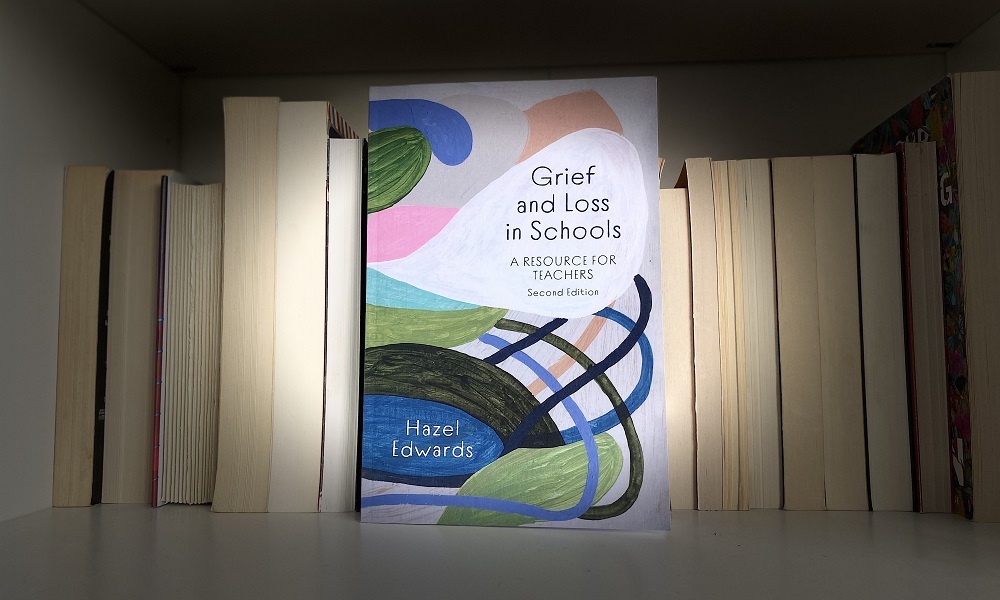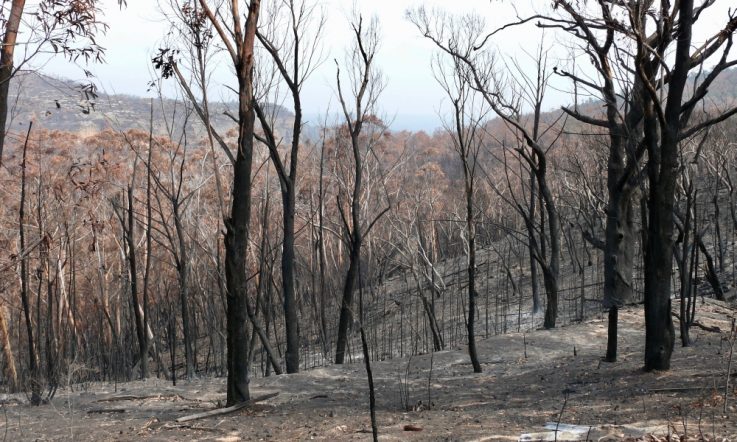Experiencing grief is something we will all confront at some point in our lives, but navigating a death in the school community, when you also need to support your students, can be really challenging.
The book, Grief and Loss in Schools: A Resource for Teachers, was published earlier this year and is written by author Hazel Edwards OAM. You might have her best-known book on your shelves at home, There’s a Hippopotamus on Our Roof Eating Cake. Hazel is a former teacher and wrote Grief and Loss in Schools based on her own experience and research. Her goal with this book is to work towards removing the uncomfortable feeling associated with grief and loss. In this Q&A, she shares some of the practical advice and suggested learning activities featured in the book.
Thanks for joining us, Hazel. It's great to be able to have such an important discussion with you on this topic. Before we delve into the specifics of the book, can you tell us about your career so far?
I'm a mixed educator/author, I suppose you’d say. Originally I trained as a primary teacher, but my first book was published when I was 27, which was General Store.
I think teaching and writing are both in the ideas business, and to me, they’re very similar and mutually supportive. Although I’m best known for The Hippopotamus on the Roof Eating Cake, I do write for all ages including adult mysteries – but I'm very conscious of tailoring any piece of writing for the specific audience.
I think that writing for younger students is the most challenging, because they’ll say exactly what they think if it doesn't work. In later life I've been doing a lot more scripting because I find that’s a way of involving students in issues, but also, it really needs to be carefully written. It looks deceptively simple, but it can actually explore complex ideas. And that's what's happening the Grief and Loss in Schools book. So I've tried to bring those skills together.
I've met some fantastic teachers and enthusiastic librarians, and I see this sort of writing as supportive of the things that they are doing. As an ambassador for various literacy organisations, I’m a great believer in writing simply.
Why was it important for you to write this book?
Some years ago I was approached by Le Pine Funeral Services, and one of their staff I’d known in an educational capacity, said, ‘look, there's nothing around for children who are grieving, and we’d like something that we could give them’. And at that stage I had just been doing some scripts for the Fire Brigade and for the Royal Children’s Hospital, in both cases where scripts were a way of giving the children a chance to explore their ideas and emotions. Knowing about that, he said ‘could you do something similar? It's a difficult topic, but would you have a go?’ And so I did a lot of research, and that book eventually came out and Le Pine were very happy with it.
But Grief and Loss goes a little bit further, because it certainly explores some of the multicultural areas, which is one of the challenges – to write so it can be adapted for any culture. So, I've used the scripts where the characters are, in some cases animals, in some cases insects, in some cases abstractions, so it's possible that whoever is grieving in any culture – and there are rituals in different cultures – that is possible for everybody to use.
We will discuss the use of scripts in more detail soon, but the book is also filled with so many practical examples for educators and schools to work through their feelings of grief and loss. Are there one or 2 key practical examples you'd like to share?
On request I included sample letters that a principal or a teacher could use for common situations. It's really hard to write about a death for anybody, so those sample letters are included.
But it’s not just the first day after a tragedy has occurred that matters, it’s the time after that matters. For example, if a child has died, suddenly there's an extra chair in the room. So it’s probably better to ask the other children, ‘What would you prefer to do? We could change the chairs around and have them in a different formation, because it's always good to try something different. It doesn't mean that we’ve forgotten whoever it is’.
A very thoughtful way of sharing memories is to have a compliments jar. Each child writes something they remember about this child, something they really valued (or if it were the teacher, or the principal). Put those compliments, titivated up in a jar, and give it to the family, because that is the genuine response. It's the genuine response that matters. And even if you're tearful or unsure what to say, you’ve made the gesture. That is so important.
The other couple of things that I have found touching is putting a plant in the garden, in memory of that child. But you’ve got to make sure it’s a hardy plant, don't put in a delicate plant of any kind. And then the school or the students will all tend it. A child can do that in memory of a relative, too, and they can weed and water it and so there's something that they associate with the person. The best idea is to have it in a large pot plant, because then it can be moved if you relocate.
Or maybe an event. Maybe the child was really good at drawing, so could the others draw something for a book? Consider what would comfort both the people doing it (the personalities doing it) and the family receiving it? Even if indeed they don't read that language (which is why the visuals are important).
The sad thing is the chances are 2 people or more in your school community will die in a year. It may be a relative of one of the children, it may be an employee, or it may be a student. I think the other difficult thing is that, for some teachers, they may not be of the culture that the child who suffered the death is. And they don't know what the rituals are, and they don't know whether it's appropriate to take flowers, or does everything have to be done within 24 hours? Or all these differences. And not wishing to offend, and maybe not wishing to attend a ceremony where they don't know the rituals. Do the family want children to come from the school? Or don’t they? You need to find that out, but at least attempt to offer that sort of support.
If there are major events and a lot of deaths in an area because of either war issues or things to do with climate, it’s difficult. For example, the whole community’s been affected by the bushfire deaths or the floods. That is when it is really, really hard because it is not just the loss of the significant person for the child, it is possibly the loss of home, it's the loss of the familiar rituals. So in that case, you’ve got to try and get things back to some sort of structure to give the child something hang onto.
The third chapter of the book is where you share the scripts that we've spoken about briefly already. These scripts are there to scaffold student discussion and you call it the ‘heart’ of the book. Why are scripts so useful for teachers in this context?
Scripts can be used in 2 ways. One is you can provide the script, but it needs to be simply written. The second way is to write your own. And we've got some in there which are abstract enough to apply to any culture.
They were very hard to write, and they have all been trialled too, across a range of communities. So you can take a script that's already been done as a starting point. These scripts are often set in insect or animal cultures so it's neutral enough. For a child who is grieving, it is one step away from their personal situation. They can play a character. This is where puppets are fantastic, because a puppet enables a child (or an adult) to assume the personality, and it's different from them and it's safer.
I think a script is the best way to deal with grieving situations, but also any situations where there’s high emotional content. The teachers may think, ‘will my students be able to read this?’ That is why it is so important to have a chorus and to have a narrator character who pulls it altogether if everything's falling apart. And I'm always very careful to have some parts that are mainly saying ‘yes’ or ‘no’, so the child who's not the world's greatest reader is still taking part.
So, you can either take the scripts that are already prepared or the other thing is to develop your own scripts. And I don't mean for the teachers to write them, I mean for the group to write them. That will give you far more idea of what they think is important. So that's the other side, that's why I think the scripts are really so versatile.
In this book, towards the end, I’ve added a story called Pop Star. I wrote that for an old school friend whose husband had passed away. His grandchildren used to refer to going out and looking at the stars at night, ‘oh, Pop Star’s up there’, and in a strange away that gave them comfort. And so I included it in this collection of ways of handling grief and her family were delighted.
And so if librarians and teachers can find some stories where you've got a character dealing with death in a realistic way, that bibliotherapy can be very reassuring. And that's why the writing of books matters.
In this Q&A, Hazel Edwards shares the value of a compliments jar, plants and using scripts. As a teacher, reflect on a time you might have helped a student cope with feelings of grief. What strategies did you utilise? What impact did this have? Do you think any of the strategies mentioned by Hazel in this episode would be of value to your school setting?
Grief and Loss in Schools is published by Amba Press and can be purchased here.



